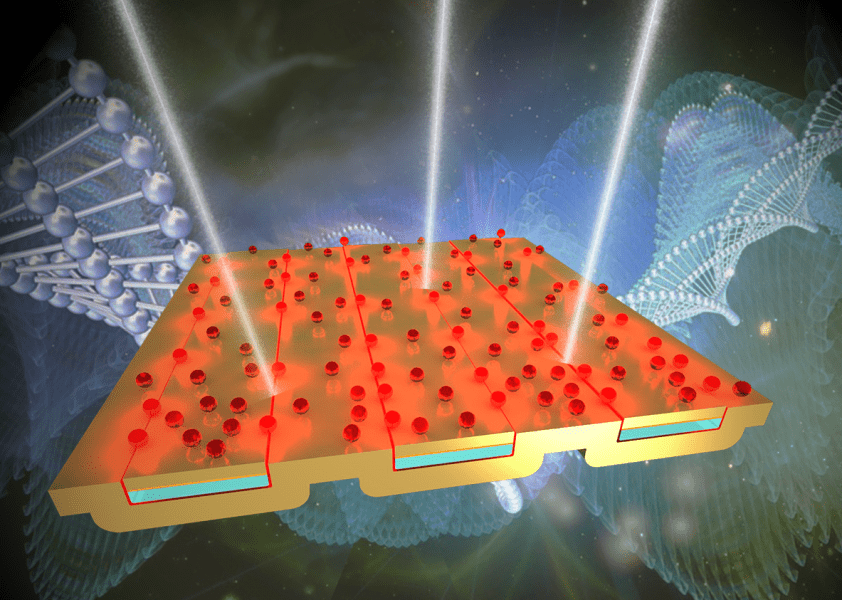Spectroscopic analysis of biological and chemical samples has come a long way in the last 100 years. With the help of plasmonics, the past decade witnessed a significant advance in sensitivity and detection limit.
In this regard, one of the most promising features of metallic nanostructures is their ability to confine optical fields and realize significant localized-field enhancement to produce plasmonic “hot spots”. This enables extremely high sensitivities for spectroscopic techniques such as surface-enhanced Raman spectroscopy (SERS) and surface-enhanced infrared absorption spectroscopy (SEIRA). These two techniques are complementary, i.e., Raman scattering peaks in SERS correspond to absorption peaks of SEIRA. However, due to differing dependence on field enhancement, the signal enhancement factors for SEIRA are typically orders of magnitude less than those for SERS. One option for boosting SEIRA signals is to strengthen the plasmonic field enhancement by reducing the gap size between surface nanostructures, thereby confining light to volumes on the order of nanometers. However, due to the conventional diffraction limit, it is challenging to squeeze incident light into these extreme dimensions with high efficiency, particularly in the mid-infrared (IR) wavelengths that are of interest in SEIRA spectroscopy.
Researchers led by Qiaoqiang Gan’s team at University at Buffalo experimentally demonstrate a metamaterial superabsorber structure with sub-5-nanometer gaps that can trap mid-IR light within these extreme volumes with efficiencies up to 81%, significantly enhancing light–matter interaction on the nanoscale. By using these structures as a substrate for chemical/biological molecule analysis with SEIRA spectroscopy, they demonstrate an enhancement factor for molecular fingerprinting of chemical molecules of up to ca. 106–107, which approaches the enhancement factors of SERS. In addition, the methods used to produce these metasurfaces are amenable to large area fabrication such as optical interference patterning and nanoimprint lithography, making this a revolutionary material for biochemical infrared absorption spectroscopy.
Text kindly provided by the authors.

















